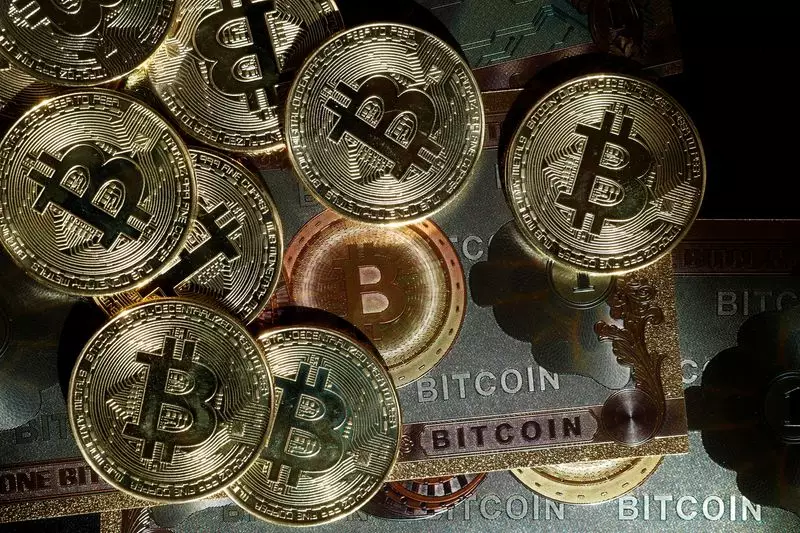The financial landscape often behaves like a complex organism, responding intricately to shifts in policy, investor sentiment, and economic indicators. Recently, Bitcoin has emerged as a prominent player in this space, garnering attention as it approaches month-long highs. Meanwhile, the yen remains in a state of stagnation, largely influenced by events surrounding major central banks. This article delves into the factors affecting Bitcoin, the yen, and the broader currency markets following notable central bank decisions.
Bitcoin has rallied impressively, reaching levels not seen in a month. This surge can be attributed to the Federal Reserve’s significant policy changes last week. The Fed’s decision to cut interest rates by 50 basis points appears to have invigorated the cryptocurrency market, as investors redirect their focus towards riskier assets. As of early Monday, Bitcoin was trading above $63,200, reflecting a modest gain of 0.8%. This uptick signifies more than just a numerical increase; it underscores a growing confidence in Bitcoin as an alternative asset amidst fluctuating fiat currencies.
The broader market consensus suggests that the Fed’s latest rate cut has assuaged inflating fears regarding a U.S. recession. Goldman Sachs echoed this sentiment, projecting a short-term rebound for the U.S. dollar, indicating that monetary easing can create ripples across asset classes, including cryptocurrencies. As rate cuts become more probable—specifically, futures trading suggests nearly 200 basis points by the end of 2025—Bitcoin’s standing as a non-correlated asset may further attract speculative investors.
While Bitcoin flourishes, the yen’s trajectory tells a contrasting story of stagnation. Japan’s central bank, the Bank of Japan (BOJ), opted to maintain the status quo concerning interest rates, signaling reluctance to engage in aggressive monetary tightening. This decision has contributed to a prevailing sense of inertia among the major currencies, especially as Japanese markets remained closed for the Autumnal Equinox Day. The US dollar has gained ground against the yen, rising to 144.50 yen at one point last week before stabilizing at around 144.08.
The BOJ’s commitment to its low-interest-rate policy—which remains unchanged despite the external pressures from the Fed’s actions—places the yen in a vulnerable position. With a sharp increase of 1.4% in September and a cautious international outlook for the currency, the yen faces compounded challenges. These challenges are further complicated by upcoming political transitions, including a ruling party vote expected to yield a new prime minister. The uncertainty surrounding Japan’s monetary policy direction emphasizes potential volatility for the yen, especially as frontrunners display diverse views on fiscal management.
As the political scenario unfolds, the BOJ may encounter substantial challenges concerning its operations. Candidates vying to replace outgoing Prime Minister Fumio Kishida express divergent opinions about monetary policy, posing a dilemma for the central bank’s future actions. For example, if Sanae Takaichi, a reflationist candidate, ascends to the premiership, concerns about the BOJ’s potential for normalizing interest rates could intensify. A victory for Takaichi could provoke a reassessment of the BOJ’s stance, raising questions about fiscal discipline and challenging the longstanding Abenomics approach.
In contrast, other candidates, like Shigeru Ishiba, advocate a more conservative approach aligned with BOJ policies. This conflicting political landscape implies that the yen’s strength and stability hinge on upcoming decisions that may reverberate through global markets. Analysts caution that instability could lead investors to reconsider their expectations for the yen, resulting in downward pressures as the central bank grapples with the implications of political changes.
The current market environment calls for investors to adopt adaptive strategies that account for the fluidity reflected in both cryptocurrency and fiat markets. With Bitcoin nearing peaks not witnessed in weeks and the yen striving to maintain its value amidst central bank inertia, an environment ripe with investment opportunities emerges—but not without risks.
Investing in cryptocurrencies could benefit those willing to ride the volatility arising from shifts in traditional financial environments, particularly given the cryptographic asset’s non-correlation with traditional fiat and its rapid capacity for substantial gains. Conversely, forex traders must keep a keen eye on unfolding geopolitical developments and their implications for fiat currencies like the yen, ensuring they are positioned to leverage potential risks and rewards.
The interplay between Bitcoin’s rally and the yen’s stagnation poignantly illustrates the complex dance of currencies in the face of evolving monetary policies and political landscapes. As markets navigate these tumultuous waters, attentiveness to both macroeconomic indicators and the sentiments of central bank policies will be crucial for savvy investors.

